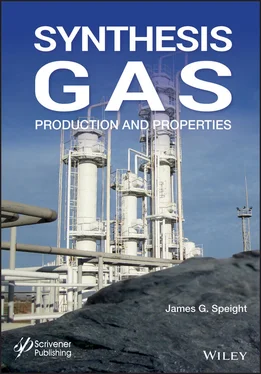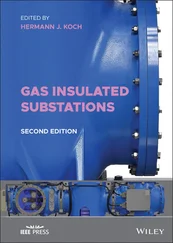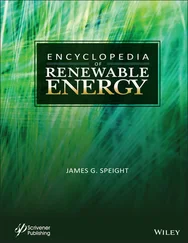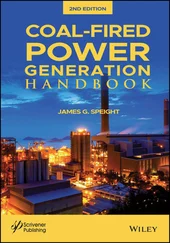At the same time, the fate of the nitrogen and sulfur in the fuel is also dictated by oxygen availability (i.e., the configuration of the gasification reactor). The nitrogen and sulfur in a gasification process has important and environmental consequences. Instead of being converted to the respective oxides, the fuel-bound nitrogen is predominantly converted to molecular nitrogen (N2) and hydrogen cyanide (HCN) while the sulfur in the fuel produces hydrogen cyanide (HCN) and carbonyl sulfide (COS).
Steam is sometimes added for temperature control, heating value enhancement or to permit the use of external heat ( allothermal gasification ). The major chemical reactions break and oxidize hydrocarbon derivatives to give a product gas of carbon monoxide (CO), carbon dioxide (CO 2), hydrogen (H 2), and water (H 2O). Other important components include hydrogen sulfide (H 2S), various compounds of sulfur and carbon, ammonia, low molecular weight hydrocarbon derivatives, and tar.
As a very general rule of thumb , optimum gas yields and gas quality are obtained at operating temperatures of approximately 595 to 650 oC (1100 to 1200 oF). A gaseous product with a higher heat content (BTU/ft. 3) can be obtained at lower system temperatures but the overall yield of gas (determined as the fuel-to-gas ratio ) is reduced by the unburned portion of the feedstock, which usually appears as char.
Gasification for electric power generation enables the use of a common technology in modern gas-fired power plants ( combined cycle ) to recover more of the energy released by burning the fuel. The use of these two types of turbines in the combined cycle system involves (i) a combustion turbine and (ii) a steam turbine. The increased efficiency of the combined cycle for electrical power generation results in a 50% v/v decrease in carbon dioxide emissions compared to conventional coal plants. Gasification units could be modified to further reduce their climate change impact because a large part of the carbon dioxide generated can be separated from the other product gas before combustion (for example carbon dioxide can be separated/sequestered from gaseous byproducts by using adsorbents (e.g., MOFs) to prevent its release to the atmosphere).
Gasification has also been considered for many years as an alternative to combustion of solid or liquid fuels. Gaseous mixtures are simpler to clean as compared to solid or high-viscosity liquid fuels. Cleaned gases can be used in internal combustion-based power plants that would suffer from severe fouling or corrosion if solid or low quality liquid fuels were burned inside them.
In fact, the hot synthesis gas produced by gasification of carbonaceous feedstocks can then be processed to remove sulfur compounds, mercury, and particulate matter prior to its use as fuel in a combustion turbine generator to produce electricity. The heat in the exhaust gases from the combustion turbine is recovered to generate additional steam. This steam, along with the steam produced by the gasification process, drives a steam turbine generator to produce additional electricity. In the past decade, the primary application of gasification to power production has become more common due to the demand for high efficiency and low environmental impact.
The products from gasification may be of low, medium, or high heat-content (high-Btu) content as dictated by the process as well as by the ultimate use for the gas (Speight, 2008, 2011a, 2013). However, the products of gasification are varied insofar as the gas composition varies with the system employed (Speight, 2013). It is emphasized that the gas product must be first freed from any pollutants such as particulate matter and sulfur compounds before further use, particularly when the intended use is a water gas shift or methanation (Cusumano et al. , 1978; Probstein and Hicks, 1990).
Product gases from fixed-bed versus fluidized-bed gasifier configurations vary significantly. Fixed-bed gasifiers are relatively easy to design and operate and are best suited for small to medium-scale applications with thermal requirements of up to several thermal megawatts (megawatts thermal, MWt). For large-scale applications, fixed-bed gasifiers may encounter problems with bridging of the feedstock (especially in the case of biomass feedstocks) and non-uniform bed temperatures. Bridging leads to uneven gas flow, while non-uniform bed temperature may lead to hot spots, ash formation, and slagging. Large-scale applications are also susceptible to temperature variations throughout the gasifier because of poor mixing in the reaction zone.
Pressurized gasification systems lend themselves to economical synthesis gas production and can also be more flexible in production turndown depending on the reactor design. Typically this is the case for both a pressurized bubbling reactor and a circulating fluidized-bed reactor , while the flexibility of an atmospheric fluidized-bed reactor is typically limited to narrower pressure and production ranges. Both designs are well suited for pressurized synthesis gas production. Pressurized designs require more costly reactors, but the downstream equipment (such as gas cleanup equipment, heat exchangers, synthesis gas reactors) will consist of fewer and less expensive components (Worley and Yale, 2012).
In the process, the feedstock undergoes three processes during the conversation to synthesis gas – the first two processes, pyrolysis and combustion, occur very rapidly. In pyrolysis, char is produced as the feedstock heats up and volatile products are released. In the combustion process, the volatile products and some of the char reacts with oxygen to produce secondary products (primarily carbon dioxide and carbon monoxide) and the heat required for subsequent gasification reactions. Finally, the char reacts with steam to produce hydrogen (H 2) and carbon monoxide (CO).
Combustion:

Gasification:

At the gasifier temperature, the ash and other feedstock mineral matter liquefies and exits at the bottom of the gasifier as slag, a sand-like inert material that can be sold as a co-product to other industries (e.g., road building). The synthesis gas exits the gasifier at pressure and high temperature and must be cooled prior to the cleaning stage. Full-quench cooling, by which the synthesis gas is cooled by the direct injection of water, is more appropriate for hydrogen production. The procedure provides the necessary steam to facilitate the water gas shift reaction, in which carbon monoxide is converted to hydrogen and carbon dioxide in the presence of a catalyst:
Water Gas Shift Reaction:

This reaction maximizes the hydrogen content of the synthesis gas, which consists primarily of hydrogen and carbon dioxide at this stage. The synthesis gas is then scrubbed of particulate matter and sulfur is removed via physical absorption (Speight, 2008; Chadeesingh, 2011; Speight, 2013). The carbon dioxide is captured by physical absorption or a membrane and either vented or sequestered.
During the production of gas by oxidation of the feedstock with air, the oxygen is not separated from the air and, as a result, the gas product invariably has a low Btu value (low heat-content) on the order of 150 to 300 Btu/ft 3. Low Btu gas is also the usual product of in situ gasification of coal (Speight, 2013) which is essentially used as a method for obtaining energy from coal without the necessity of mining the coal, especially if the coal cannot be mined or of mining is uneconomical.
Читать дальше















